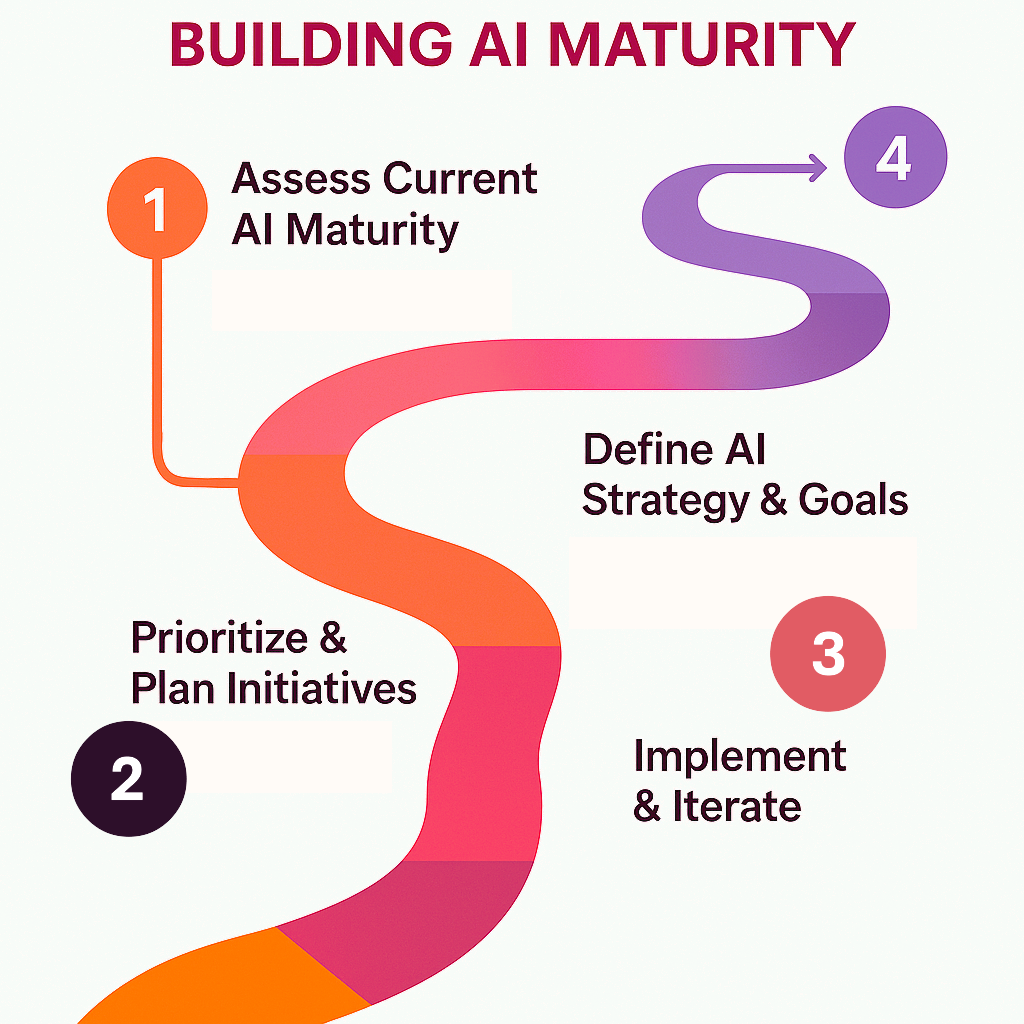

In today’s race to embed AI into every product and service, organizations often rush to adopt technologies without a long-term vision. But the true trailblazers are those who pause to assess their AI Maturity—and use that understanding to build a roadmap for sustainable AI success.
AI Maturity measures how ready an organization is to harness the full potential of AI. It encompasses technical capabilities, data architecture, governance, infrastructure, and workforce readiness. Together, these pillars form the foundation of an organization truly prepared to scale AI in a meaningful and responsible way.
To evaluate AI maturity, organizations should ask themselves:
- Do we have a long-term AI strategy focused on measurable outcomes?
- Is our data ecosystem robust enough to power AI tools effectively?
- Does our organizational structure support AI innovation and governance?
- Are our employees equipped with the skills required for an AI-driven future?
- Have we implemented an AI management framework that addresses risks and includes mitigation strategies?
- Do we have the infrastructure to support end-to-end AI lifecycle management?
These questions aren’t just reflective—they’re directional. They help organizations chart their path toward AI maturity.
Organizations typically evolve through five levels:
Level 1: Awareness – Recognizing AI’s potential.
Level 2–4: Progression – Building strategy, governance, skills, and technical assets.
Level 5: Transformation – When AI becomes embedded in the organization’s DNA and drives continuous value creation.
A maturity assessment is not just a scorecard—it’s a strategic tool. Here's what it enables:
- Clarity of Current State – Identify where you are today, and where the biggest capability gaps lie.
- Roadmap Development – Build a focused, practical strategy to reach your desired maturity level.
- Initiative Prioritization – Align AI projects with business impact and strategic priorities.
- Boosted Adoption and ROI – Sharpen focus on value-driving areas to maximize AI returns.
- Sustainable Competitive Edge – Maturity leads to agility, resilience, and market differentiation.
Awareness is the first milestone. From there, organizations should build a clear, staged roadmap to elevate their AI capabilities:
1. Assess Current Maturity
Analyze existing capabilities and identify gaps against future goals.
2. Prioritize and Plan
Develop a tailored strategy to bridge the gap, focusing on high-impact initiatives.
3. Implement and Iterate
Drive adoption through pilot programs, change management, and continuous upskilling.
4. Define Strategy and Goals
Align AI investments with business goals and embed them into the broader strategic vision.

Organizations that lead with AI don’t chase every shiny object—they pursue a thoughtful, well-scoped vision. They understand why they’re using AI, and what outcomes matter. In a market flooded with new AI features and tools, the winners will be those who lay strong foundations, manage risk, and build for scale.
AI Maturity is not a destination—it’s a dynamic journey. But with the right assessment and a clear roadmap, your organization can stay ahead of the curve and turn AI into a core competitive advantage.

.png)
